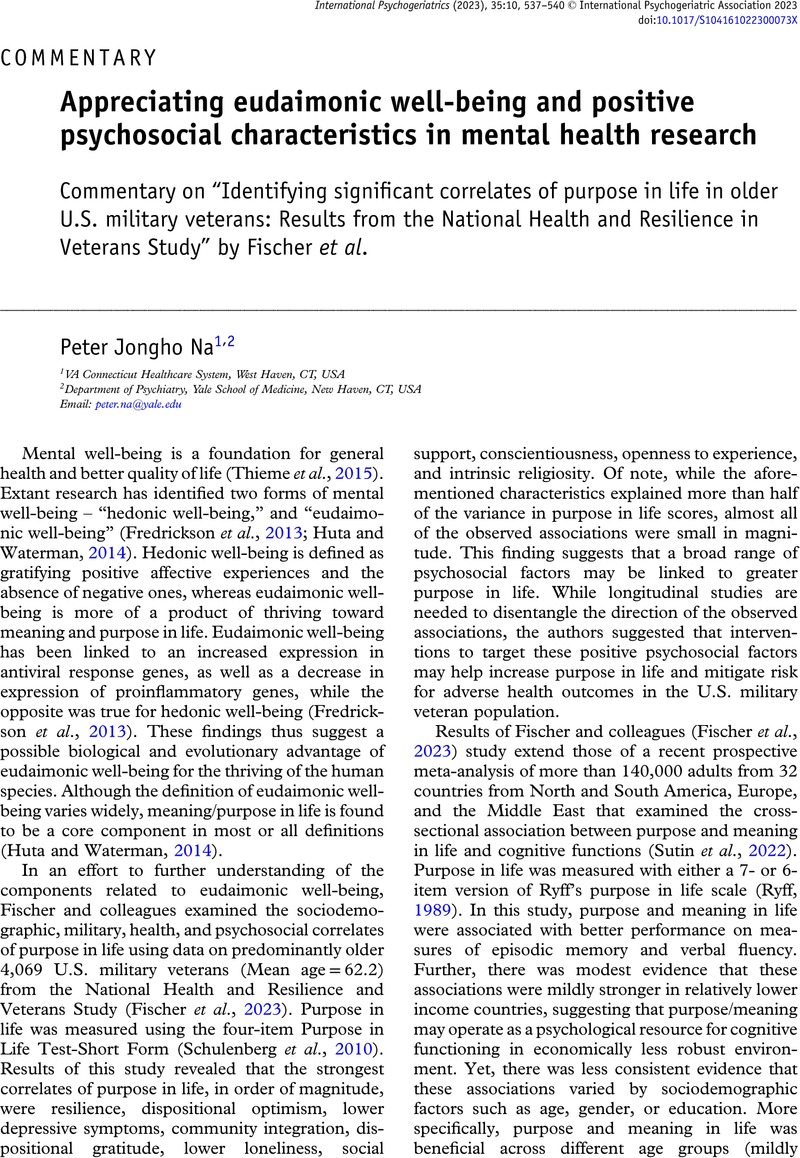No CrossRef data available.
Commentary on “Identifying significant correlates of purpose in life in older U.S. military veterans: Results from the National Health and Resilience in Veterans Study” by Fischer et al.
Published online by Cambridge University Press: 24 August 2023
